Home » Quail Species » The Quail Slam of the United States
The Quail Slam of the United States
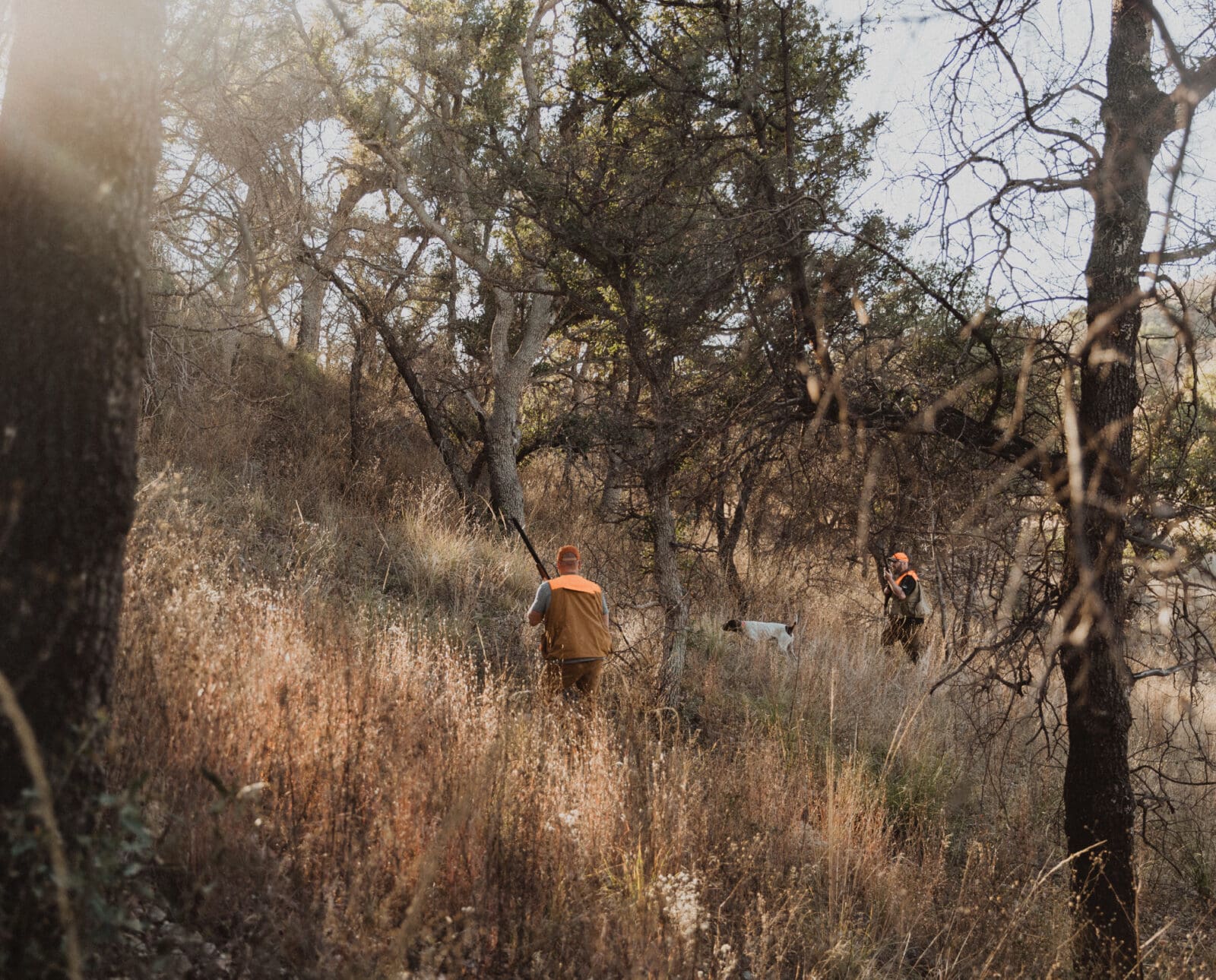
Raised in the upland bird mecca of Kansas, the passion…
Explore the quail species that constitute the quail slam in the United States through the unplanned journey of a quail biologist.
There are six quail species that comprise the quail slam in the United States. They belong to the Odontophoridae family and are sometimes referred to as New World quail. The six huntable species are the bobwhite, mountain, California (valley), scaled (blue), Mearns (Montezuma), and Gambel’s quail. They represent a broad swath of the United States; however, except for the bobwhite quail, they are all found mostly in the Western United States.
Listen to more articles on Apple | Google | Spotify | Audible
List of Quail Species in the United States Slam
- Bobwhite Quail
- Gambel’s Quail
- Scaled (Blue) Quail
- California (Valley) Quail
- Mearns (Montezuma) Quail
- Mountain Quail
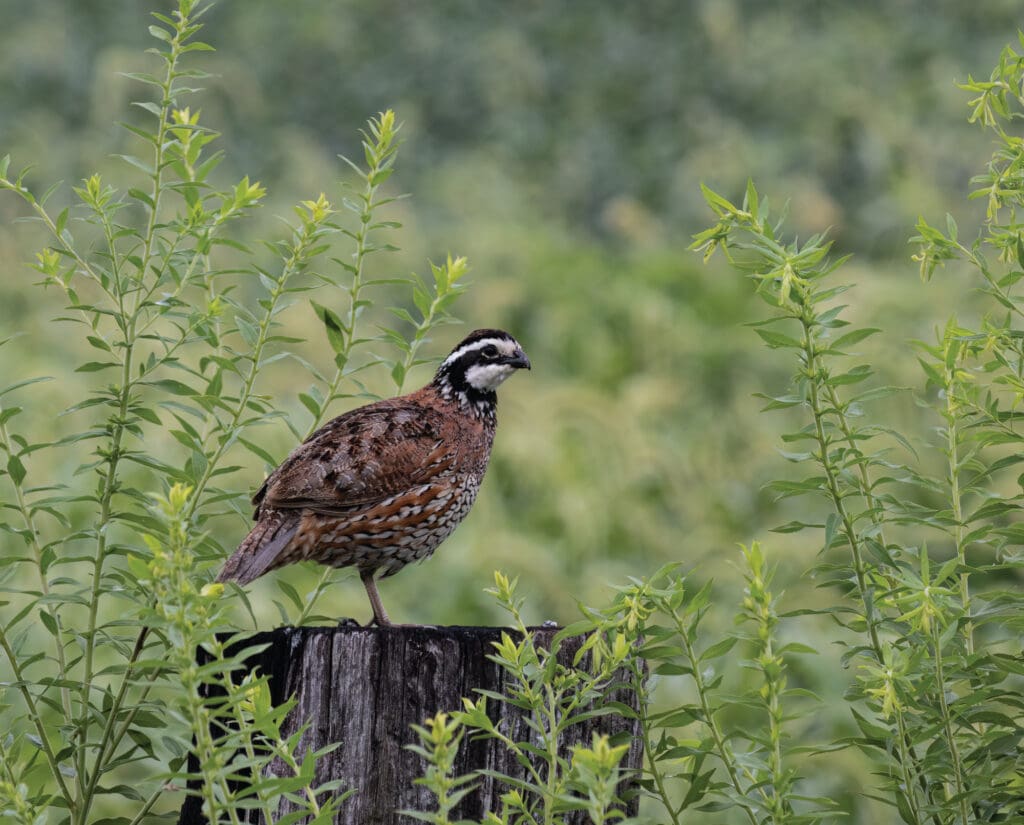
Bobwhite Quail
Having grown up in southeast Kansas in the 1980s, I was indoctrinated into bobwhite quail hunting at a young age. Bobwhites occur across over one-third of the United States. In the midwest, they are often found frequenting fencerows bordering crops or native pastures. Although the glory days of the 1950s were in the rear-view mirror, there were still quail present on most farms, and in some cases, enough to have a quality hunt.
My father hunted quail his entire life. He grew up on a farm and after the passing of his parents, he inherited the home place and two other tracts of land. We lived about forty minutes away from the farm, but made several trips in the fall and winter to chase quail. Since Dad grew up in the area, he knew most of the neighbors. This opened the door for him to gain permission to hunt several other farms beyond our own. Fencerows dissected the landscape, separating milo fields from pasture. Most of these fencerows still held a covey or two of quail.
After taking a hunter’s safety course at age 12, I was finally allowed to graduate from carrying a BB gun and was given a single-shot, bolt action 20-gauge during the fall of 1984. I had a few shooting opportunities during the first three hunts that fall, but I didn’t connect. Covey rises were the worst. I panicked and failed to focus on one bird, which often resulted in flock shooting into the middle of the covey, which never works. Singles presented higher odds at success, but those opportunities were usually thwarted by others in our group who were quicker at shouldering their gun than a skinny little 12-year-old.
As with anything, if you try enough times, you are bound to eventually succeed. One day, we were hunting a piece of land we called “The 120.” The property was L-shaped with a nice mix of crop and pasture. It had ideal habitat for bobwhites. We walked across the pasture, lined out four hunters wide. Our English Pointer, Thunder, slammed on point to my right between my dad and I. We both approached Thunder as her snow-white tail stood erect, signaling her discovery.
The area was open, with no trees to obscure any shooting lanes. Dad asked if I was ready, and upon my nod he took one more step. The covey erupted, mostly veering around my dad off to his right. However, one bird caught my eye that chose a different path. As the bird flew straight away from me, I heard my dad shooting into the covey that buzzed around him. I shouldered my gun and instinctively pulled the trigger. But this time, something was different. The bird fell to the ground.
“I got one!” I shouted. My dad turned to look as I raced forward to claim my prize. Thunder was already retrieving a bird dad had shot, so I made my own retrieve. It was a male, beautifully adorned with black, white, and brown patterning across its chest. I proudly loaded it into my vest and carried it the rest of the day. Time went on, and we continued to hunt bobwhites several times each season. However, at this age, I didn’t even know what other species of quail existed across the country.
As with most upland hunters, the desire to see new territory and hunt new species eventually swells inside us. I was no different and had spent some time throughout the late 90s and early 2000s hunting various other states for species that didn’t live in Kansas. I still pursued bobwhites throughout the season in my own territory, but hadn’t given any thought to pursuing other quail species. Finally, after I had harvested several new species across several states, the desire to hunt desert quail crept into my mind. I began to unknowingly plan my route to a quail slam.
One of my out-of-state hunting partners is fellow wildlife biologist Frank Loncarich. We both wanted to pursue desert quail, but we knew that annual rainfall played a critical role in population increases and decreases. We watched the weather for a couple years, listened to podcasts about hunting Arizona, read articles on Gambel’s and scaled quail, and visited with a couple of coworkers who had previous desert hunting experience prior to making the trip ourselves.
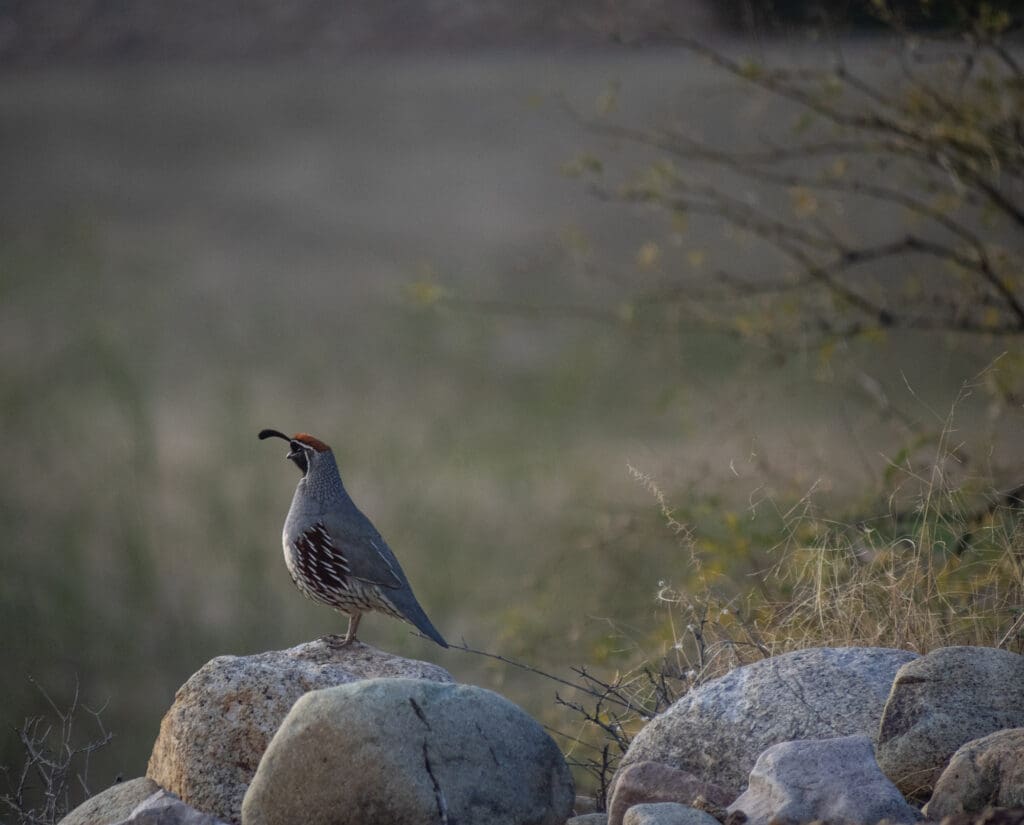
Gambel’s Quail
The 2020-2021 season proved to be the time for the trip to the southwest. Abundant winter rains set the stage for two good hatch years for Gambel’s quail, resulting in the highest population seen in several decades. Frank, his father, James, and I drove to Arizona in January of 2021. We were greeted by plants and landscapes completely foreign to us. As we drove down a two-track leading to a pond, we admired the hostility of the various cactus species. Cholla cactus taller than the truck seemingly glared at us as we passed by, threatening to stab us if we dared to approach them. We had done our homework and knew we needed to hunt washes near water. The washes are low swales that have more brush than the surrounding desert flats. We also knew Gambel’s were track stars, preferring to run rather than fly.
Our first two washes produced quail, but we underestimated their ability to run and elude our pursuit, even after the initial covey flush. Finally, a couple hours into our hunt, I heard a shout from across the wash. “Birds!” I looked up in time to see a single land at the base of a yucca just 40 yards in front of me. I called for my German Shorthair, Harley, and hustled to the yucca.
Upon my arrival, Harley flashed on point for a mere second before the male Gambel’s quail took flight. I could clearly see his facial coloration and topknot. I knew this was a chip shot and I needed to execute. With one bark of the Franchi, the bird tumbled to the desert floor. Harley made quick work of the retrieve. I admired my prize and took pictures to preserve the moment.
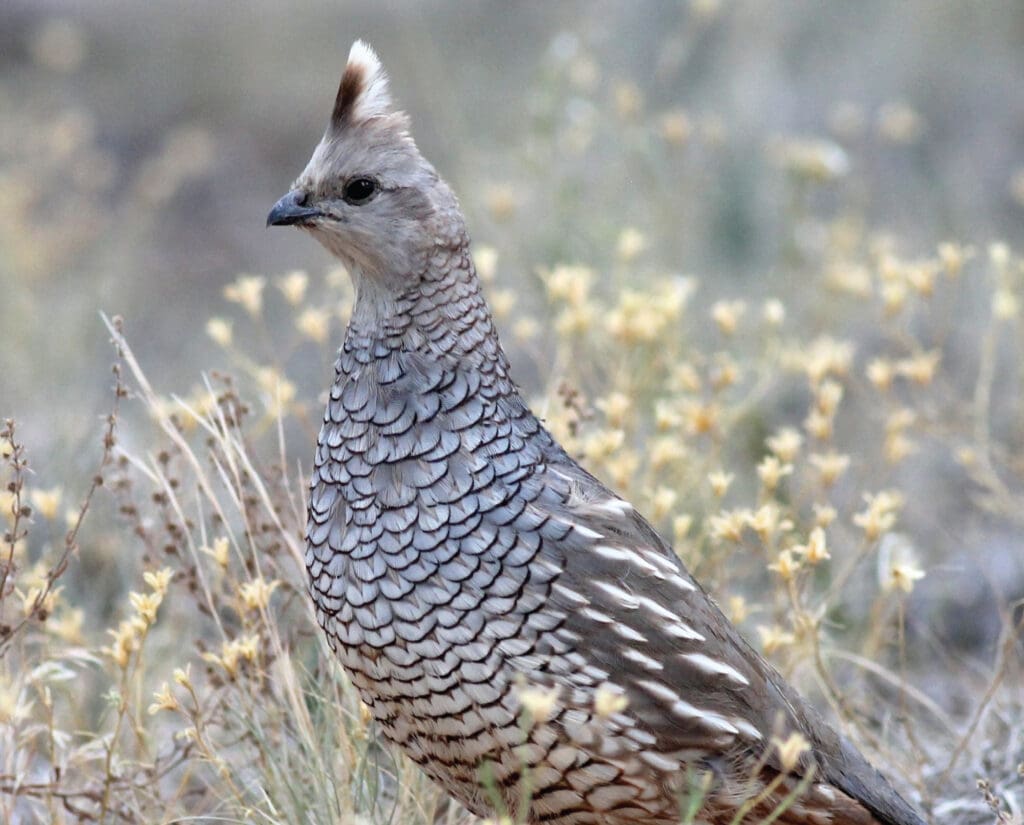
Scaled Quail
The next day, we headed to a new territory. We checked out some ground a coworker had hunted a few years prior. After a two-hour drive, we arrived at our destination, noticing a distinct difference in the habitat. This area had brushy washes, much like we saw the day before, but the flats contained a lot more grassland and less cactus. Scaled quail prefer grassland habitat, so we knew we had a chance for scaled quail as well as Gambel’s. We located a pond and decided to begin our search there.
Tracks were quickly discovered, which gave us hope. As we hunted through the wash and the adjacent flat, my German Shorthair, Buddy, became birdy. He would point momentarily, then reposition. He continued this for several cycles, at which point I finally looked up to see a small covey of scaled quail running 80 yards ahead; the exact behavior they’re notorious for. I called to the dog and together we quickly pursued them.
Once Buddy saw the running birds, being undisciplined in hunting these uncooperative birds, he kicked into high gear and approached close enough to the covey that they launched into flight. One bird broke back toward me, attempting to pass by my left side. An easy swinging shot abruptly halted his flight path. I held my first scaled quail just one day after shooting my first Gambel’s. Now, I was two species closer to completing a quail slam.
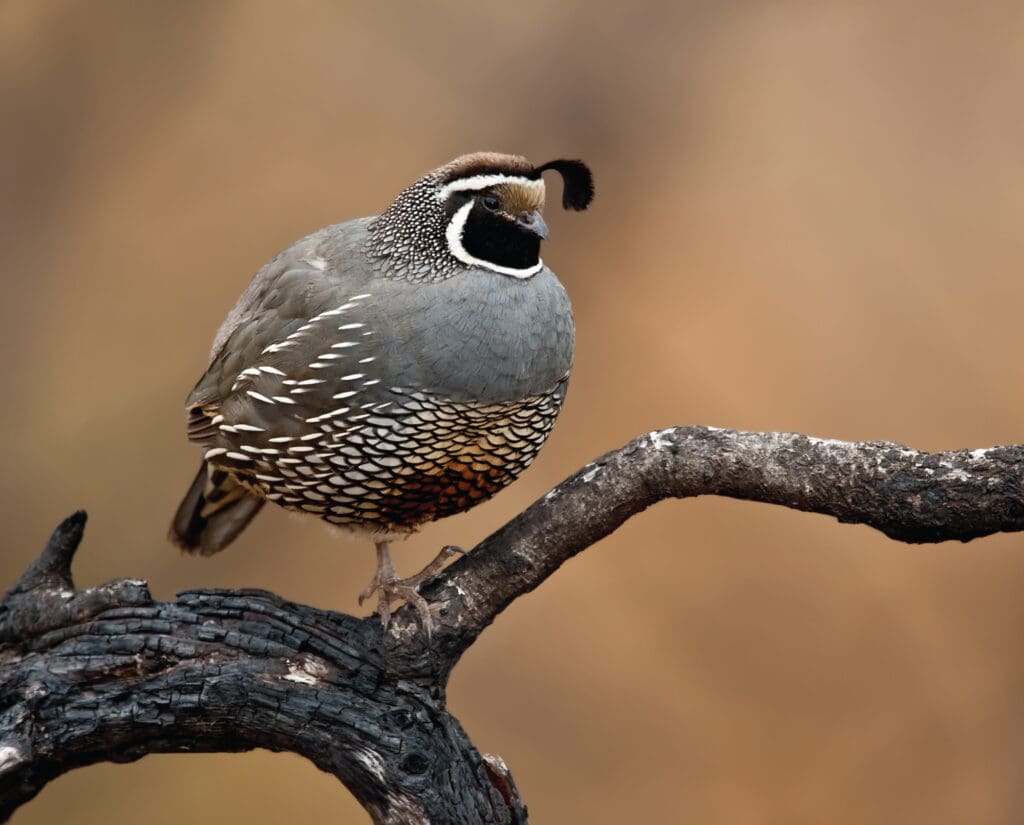
California Quail
I had been planning to hunt chukar for several years when a fellow biologist, Clint, gave me an open-ended offer to join him on a hunt in Utah. Answering his call, I headed west in early December of 2022, again accompanied by my friend and coworker, Frank. After a successful chukar hunt that Saturday, we discussed our options for Sunday morning. We planned to only hunt for a couple of hours, then head south to avoid the approaching snowstorm.
Over supper, Clint mentioned a local wildlife area that typically held a covey or two of California quail. We never considered the possibility of harvesting California quail on that trip; we jumped at the opportunity. The next morning, we began our pursuit while walking along a riparian zone choked with brush, the preferred habitat of California quail.
After 45 minutes, we reached a fork in the draw and movement caught my eye. Several quail ran ahead, much like their desert counterparts. Their grey bodies were a stark contrast to the snow below their feet. Most of the covey erupted too far to my left for a shot, but several birds continued to run, angling to my right. There was slight opening cutting across the draw, and I quickly crossed through. As I rounded the corner on the opposite side, a lone hen took flight from my left. As she passed overhead, my Franchi found its mark, and she came to rest atop the snow. I again admired my prize and recognized how fortunate I was to be able to harvest a bird that wasn’t ever an expectation of this trip.
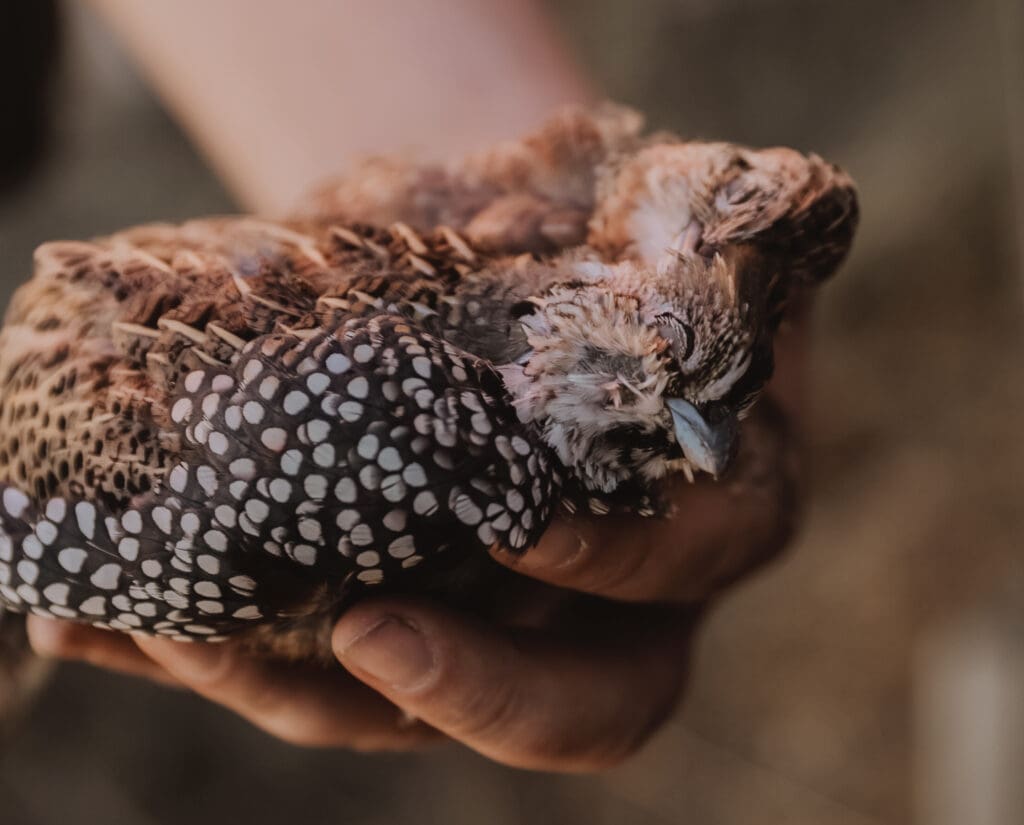
Mearns Quail
As planned, Frank and I left Utah and headed south to beat the snowstorm. When we hunted in Arizona in January of 2021, we did not pursue Mearns quail because their numbers were poor. Plus, we were targeting desert quail. As opposed to the previous year, the reports for 2022 sounded promising as much of Arizona got good summer rains, which Mearns rely on for good production. When we awoke the following morning, the oak savanna habitat Mearns prefer was blanketed with several inches of snow.
An hour into our hunt, Frank’s German Shorthair, Sage, stood motionless beneath a snow-covered oak. We approached and carefully positioned ourselves for the covey rise. We took our time, making sure we had clear shooting lanes, knowing that Mearns hold extremely tight. Finally, the covey erupted into flight. Despite my careful selection of a location that provided adequate shooting opportunities, I found myself looking at one single quail in my shooting lane. I could plainly see the polka dots of the mature male. Instinct took over. I snapped my gun to my shoulder. The bird fell, motionless, and laid on the snow with its black legs and chestnut breast facing the sky.
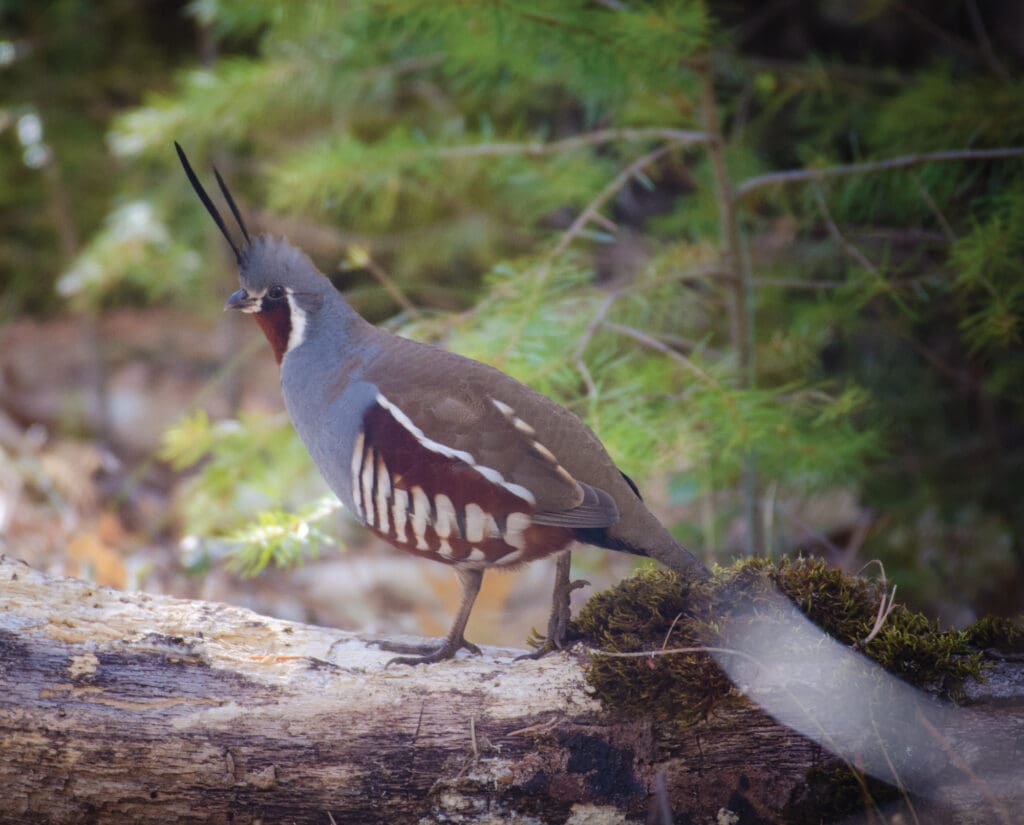
Mountain Quail
Today, I unintentionally find myself one species away from the quail slam. Since I never planned to achieve a quail slam, I also never considered pursuing mountain quail. However, had I known I would end up in this place, I would have hunted them at a much younger age. Mountain quail live in the most rugged terrain of all the quail species and reside mainly in the Pacific Northwest. Someday, this trip will be exhausting, but worth it.
After spending a career managing quail, I feel obligated to complete the journey, even if it began almost by accident. I suppose it’s time to start planning the final leg of a quest that’s now 38 years in the making.
Raised in the upland bird mecca of Kansas, the passion for upland birds was born at a young age for Kyle Hedges. He has now spent over 25 years managing upland game habitat on public lands in Kansas and Missouri for State Conservation Agencies. He also works as a Habitat Consultant for Land and Legacy, assisting landowners across the country with improving their properties.





Same boat… I have only Mountain Quail remaining to complete the ‘slam’. Hopefully some day before I get too old!